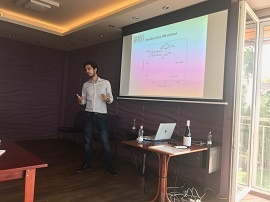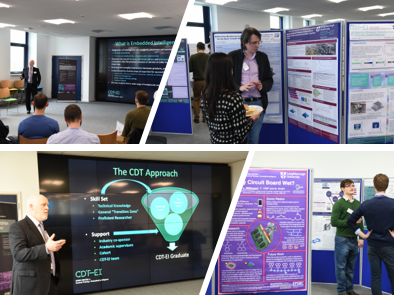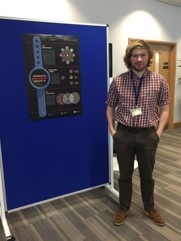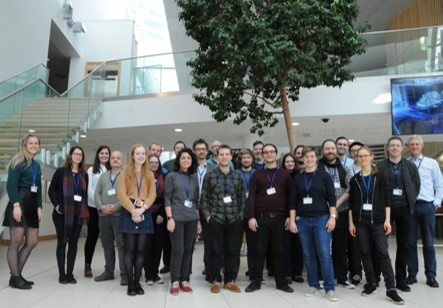Marcus Pollard, Robin Hamer, Gajarajan Sivayogan and Wen Gu have developed a proposal that aims to save money and time by ensuring predictive maintenance of tablet-making machinery.
The UK subsidiary of global Connectivity and Networks component manufacturing specialist HARTING challenged the students to suggest potential applications for their new product MICA.
MICA (Modular Industry Computing Architecture) is an edge computing device that can be digitally retrofitted into existing production facilities as a direct interface to machines.
It provides a bridge between machines and cloud-computing and can be immediately and securely integrated into a production environment for minimal cost, providing continuous data processing and condition monitoring analysis of key operating processes.
The students decided to focus on a pharmaceutical application after being inspired by Marcus’ placement year at a British multinational consumer goods company.
They decided to focus on tablet presses as they are one of the most common pieces of equipment in a pharmaceutical manufacturing environment.
They work by filling a hole – known as a ‘die’ – with a powder and this powder is compressed by two metal punches to form a tablet.
Tablet presses used in manufacturing continuously use multiple dies and punches – collectively known as ‘toolings’ – to achieve high output.
Some tablet presses can produce 229,500 tablets per hour with 32 sets of toolings and, as a result, these punches are under continuous wear and are prone to breakages.
Breakages mean that the tablet press needs to be stopped for maintenance, which costs money. Breakages of the punches could also lead to metal fragments being deposited in the tablet batch, which means the whole batch would need to be disposed of as it would be unsafe.
The Loughborough students’ came up with the idea of tracking the use of these punches and dies via RFID (radio-frequency identification) tags on the tooling that would be scanned by MICA and recorded in a database.
By tagging the tooling and tracking the number of tablets a machine has produced, the wear on the tooling could be continuously monitored so that when this hits a critical point it can alert a staff member via email.
It would let them know that a particular piece of tooling has reached its pre-defined end of operational life and needs replacing, giving its location to allow for minimum downtime.
The proposal also suggests that the tags on the tooling could store information on which machines had used the tooling, which operators had used the tooling, the length of its current life and how many of a particular tooling is in stock.
Marcus commented: “We hoped this idea would help reduce breakages which in turn would reduce the production downtime meaning lower costs and reduce losses suffered from damaged batches, but also give a full history of the tooling which could provide useful accountability information for the manufacturer and regulatory bodies such as the MHRA [Medicines and Healthcare products Regulatory Agency]or FDA [Food and Drug Administration Agency].”
Howard Forryan, Product Market Specialist at HARTING, said: “HARTING were very impressed by how quickly the students were able to understand the main operating concepts of the MICA edge computing device.
“For example how best to programme it and download the most appropriate software from HARTING’s online stored range of “Open software” development containers, in accordance with the application requirements.
“As a result of this specific well-developed and fully-engineered application case solution, HARTING have been able to market this concept to the wider pharmaceutical manufacturing industry.”
This work was conducted as part of our industrial group project scheme, which runs twice a year. If you want to know more about the scheme or our industry-relevant PhD programme and the options available to collaborate contact us.
1.0.0.19






 Cohort 3 student Gergely Hantos took part in the Cambridge Spark Applied Data Science Bootcamp.
Cohort 3 student Gergely Hantos took part in the Cambridge Spark Applied Data Science Bootcamp.


 Each year the Ordnance Survey (OS) invites the PhD students it sponsors to its HQ in Southampton for a workshop involving presentations of each student’s current status and work, panel discussion on topics and general networking. There were 22 PhD students present at the workshop, all from different backgrounds and Universities spanning the UK and even including one person who travelled from New Zealand.
Each year the Ordnance Survey (OS) invites the PhD students it sponsors to its HQ in Southampton for a workshop involving presentations of each student’s current status and work, panel discussion on topics and general networking. There were 22 PhD students present at the workshop, all from different backgrounds and Universities spanning the UK and even including one person who travelled from New Zealand.